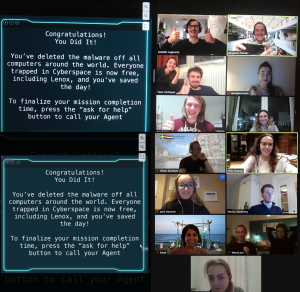While it is normal for security and offices directors to issue a “Solicitation for Proposal” (RFP) while buying a surveillance camera framework as well as access control, it isn’t generally really smart because of the limits it puts on both your security supplier and the new hardware which you’re mentioning. By the day’s end, composing an RFP could turn out to be a tremendous exercise in futility – furthermore, more information , expecting that you thoroughly finish merchants that recognize your RFP, you could be truly limited by your thing judgments or more horrible – as far as possible in a difficult situation expecting that your security provider leaves the business or decides not to offer assistance for the things that have been presented per your RFP.
Masters of the RFP cycle

While utilizing the RFP obtainment cycle to buy and introduce a security framework, a task chief will report the venture’s all’s necessities, essential materials, timetables, and subtleties, and present a proper proposition to various sellers that he/she wishes to consider. Merchants will answer provided that they can satisfy the specific solicitation and will exclude any superfluous data or ideas. This arrangement normally possibly works assuming you have broad information on the security items, which brands are ideal, and in which applications these items are intended to be utilized. On the off chance that you’re an undertaking director with broad information on the thing you’re presenting a proposition for, the following are a couple of justifications for why you can profit from the RFP cycle:
It offers a level battleground. You can present your RFP to any merchants who meet your capabilities and all sellers will approach similar data. You’ll probably get numerous statements from contending merchants and will have the chance to choose the most sensible deal.
It puts centers around unambiguous measures. Your security project administrator can guide the organization’s assessment board to zero in on unambiguous data framed in the proposition. This guarantees that the board will not be impacted by unessential data that the venture chief doesn’t see as relevant to the RFP and that sellers will be thought about on measures laid out by the task administrator.
It offers the possibility to find new sellers. On the off chance that your undertaking supervisor has projected a wide net – submitting RFPs to different qualified sellers furnishes the chance to work with a new and possibly more qualified merchant for your venture.
Cons of the RFP Process
Numerous RFPs utilize the Proprietary Method, which includes the purchaser portraying precisely the exact thing he needs to purchase, how he needs it introduced, and including maker names and model numbers. This technique can be especially unsafe on the grounds that it puts total liability regarding hardware execution on the purchaser – who is in many cases less learned on these items than the seller. A few weaknesses of the restrictive technique include:
- You need to do your own exploration. Surveillance cameras and items are confounded – and many brands utilize befuddling phrasing to make it sound like their frameworks perform better compared to those publicized. That implies regardless of whether you the entirety of your own exploration and find a framework you have total trust in, you might in any case buy an item that will not proceed as promoted.
- Exclusive details limit the contest. Since you’ve included careful details, items, and perhaps model #s, there is a limited number of merchants who will actually want to satisfy your precise solicitation – which seriously restricts the contest and quite often brings about inflated costs.
- One more technique utilized for RFPs is the Descriptive Method. While this gives the purchaser some command over the sort of hardware being introduced, it permits the merchant greater adaptability in item choice. While this might increment rivalry and thus lower costs, this technique isn’t without its weaknesses:
- Graphic RFPs can time-consume. This technique requires the task supervisor to give a nitty gritty determination of every part, which might actually be an exercise in futility thinking about there are reliable merchants who can give that kind of data at no extra expense (many give free conferences).




